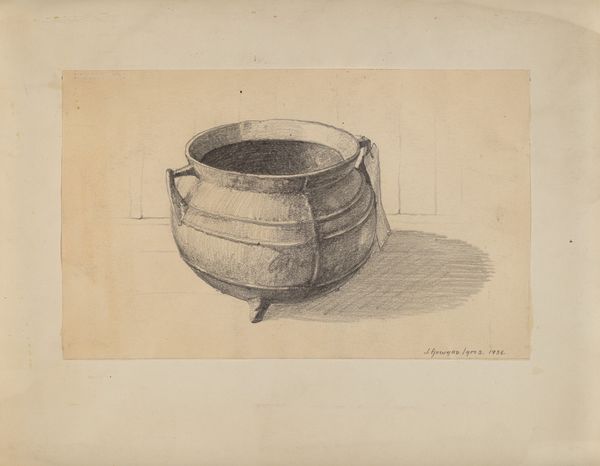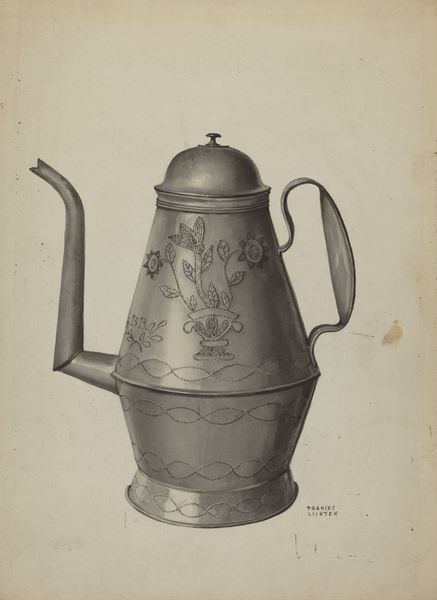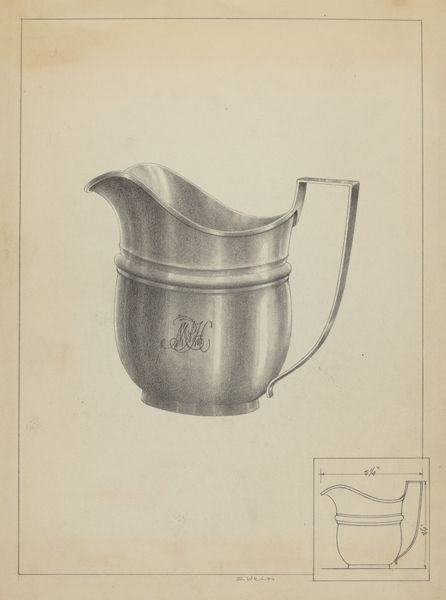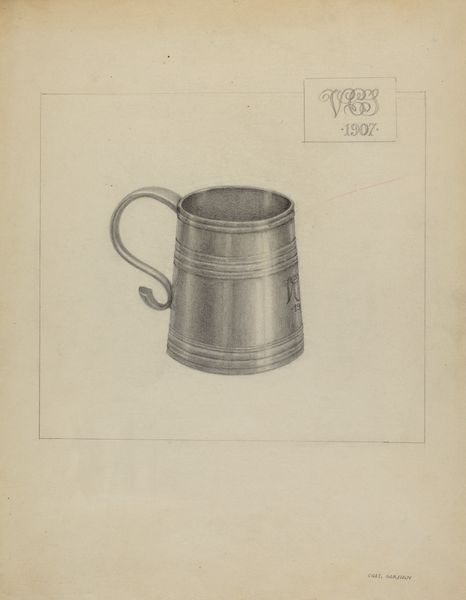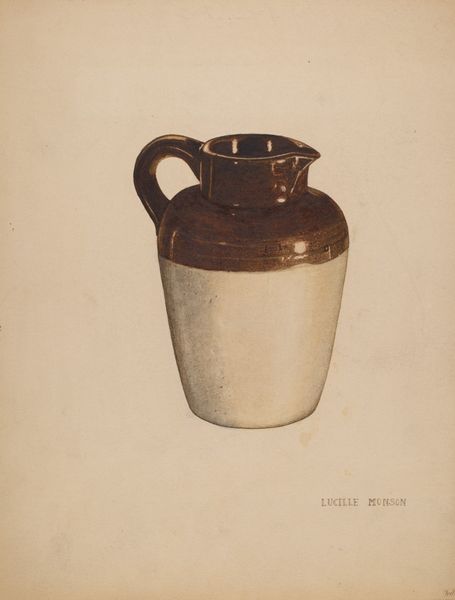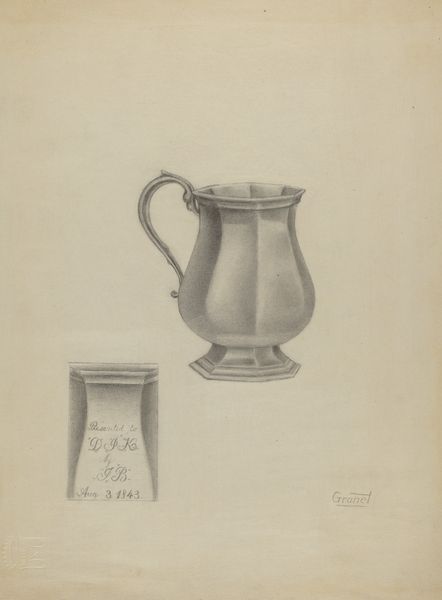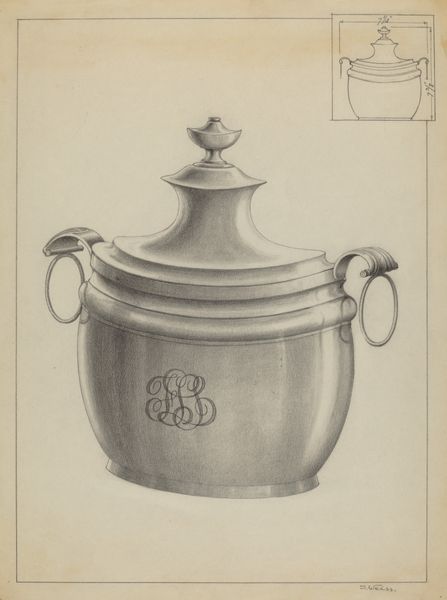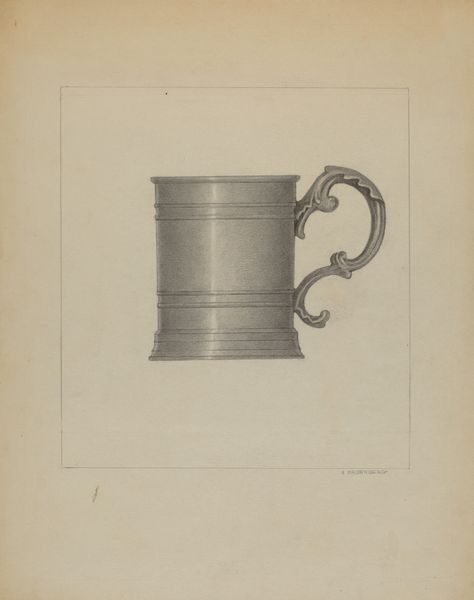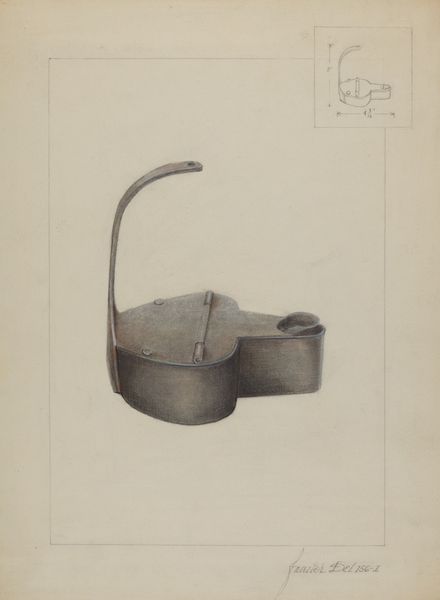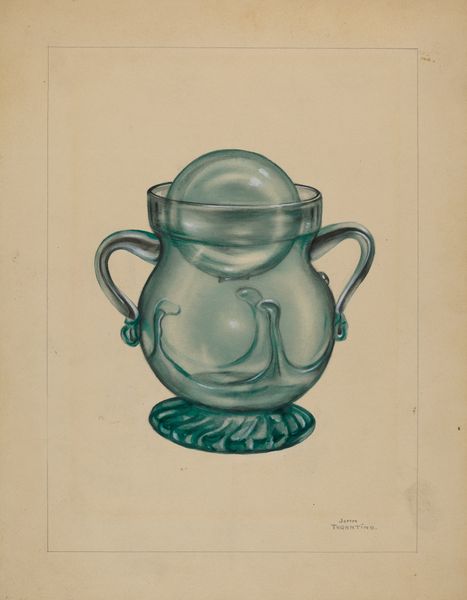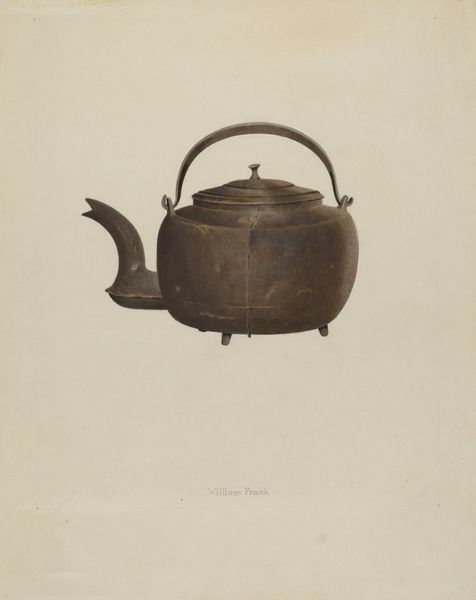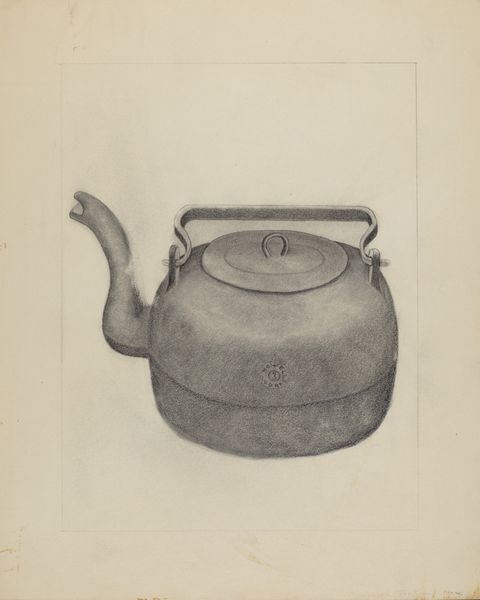
drawing, paper, ink
#
drawing
#
vase
#
paper
#
personal sketchbook
#
ink
#
watercolour illustration
#
realism
Dimensions: height 210 mm, width 250 mm
Copyright: Rijks Museum: Open Domain
Curator: There's a quiet elegance to this drawing; I find myself drawn to the interplay of light and shadow. Editor: That's true, it’s striking how a seemingly mundane still life can hold such depth. The work is titled “Kruik en emmer,” or “Jug and Bucket,” made with ink on paper some time between 1809 and 1854, by Cornelis de Kruyff. Curator: Considering the era, I immediately think about labor and domesticity. Whose labor sustained these objects, and whose stories are unseen, contained within the jug and bucket, silent witnesses? Editor: Interesting take. Looking at the lines, their crispness, their deliberate weight, I can't help but consider De Kruyff's compositional choices. Note how the cylindrical forms contrast. The bucket almost spills out of the frame. Curator: That positioning seems purposeful. Perhaps a subtle statement about the overflowing burden often placed on women, a quiet disruption of the still life tradition which typically focuses on a passive depiction? Editor: Or could the composition emphasize utility, how function informs form. The jug, with its defined shape versus the open receptivity of the bucket. It speaks to practical necessity in its purest state. Curator: Yes, and beyond function, who had access to these items and how did that impact daily existence? Consider those marginalized based on gender, race, or class— their access would have vastly differed. Editor: I am also drawn to the materiality, the smooth surface implied versus the rougher texture of the bucket. A dichotomy represented simply with line weight and delicate shading, beautifully rendered, despite the seeming triviality. Curator: Agreed. But let's not diminish the power of everyday items; they reflect the lives of ordinary individuals, whose struggles and contributions are frequently omitted from mainstream historical narratives. This becomes a powerful statement about presence and absence. Editor: You've certainly expanded my perception. Now, I am noticing how the objects are arranged but it’s the story behind it that you’ve helped bring to life. Curator: And your keen eye to detail made me realize the real purpose here is to show how everyday objects take a different importance when looked at from a more observant point of view.
Comments
No comments
Be the first to comment and join the conversation on the ultimate creative platform.

